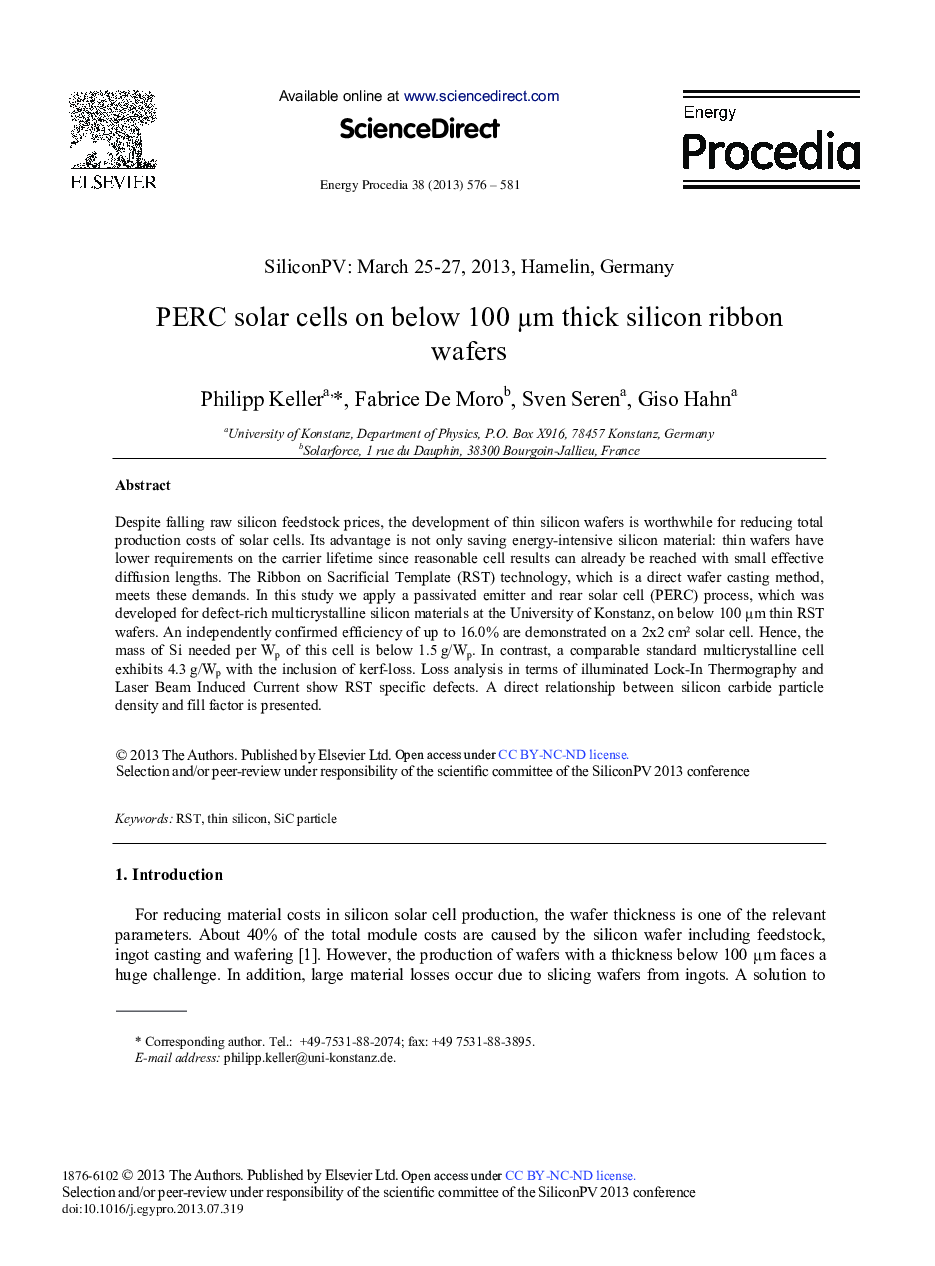| Article ID | Journal | Published Year | Pages | File Type |
|---|---|---|---|---|
| 1512660 | Energy Procedia | 2013 | 6 Pages |
Despite falling raw silicon feedstock prices, the development of thin silicon wafers is worthwhile for reducing total production costs of solar cells. Its advantage is not only saving energy-intensive silicon material: thin wafers have lower requirements on the carrier lifetime since reasonable cell results can already be reached with small effective diffusion lengths. The Ribbon on Sacrificial Template (RST) technology, which is a direct wafer casting method, meets these demands. In this study we apply a passivated emitter and rear solar cell (PERC) process, which was developed for defect-rich multicrystalline silicon materials at the University of Konstanz, on below 100 μm thin RST wafers. An independently confirmed efficiency of up to 16.0% are demonstrated on a 2x2 cm2 solar cell. Hence, the mass of Si needed per Wp of this cell is below 1.5 g/Wp. In contrast, a comparable standard multicrystalline cell exhibits 4.3 g/Wp with the inclusion of kerf-loss. Loss analysis in terms of illuminated Lock-In Thermography and Laser Beam Induced Current show RST specific defects. A direct relationship between silicon carbide particle density and fill factor is presented.
